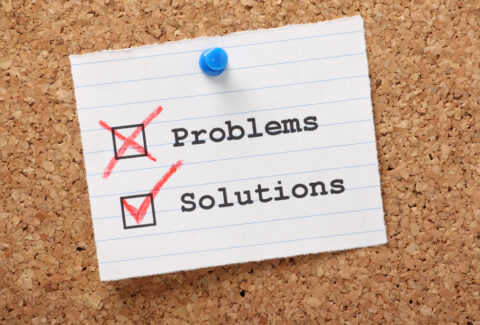Solution-Focused Brief Therapy: Strengths and Resources

Solution-Focused Brief Therapy: Strengths and Resources
Solution-Focused Brief Therapy (SFBT)[1] is a therapeutic approach that emphasizes clients’ strengths and resources as key elements in achieving positive change. Developed by Steve de Shazer and Insoo Kim Berg in the late 1970s, SFBT focuses on solutions rather than problems, harnessing clients’ existing capabilities to help them reach their goals.
The Role of Strengths and Resources in SFBT
Why Focus on Strengths and Resources?
- Empowerment
By highlighting clients’ strengths and resources, SFBT empowers individuals to see themselves as capable and resourceful. This empowerment fosters a sense of self-efficacy and confidence in their ability to manage and overcome challenges.[2] - Positive Outlook
Focusing on strengths shifts the therapeutic conversation from a problem-centered narrative to one of potential and capability. This positive outlook[3] can motivate clients and create a more hopeful and engaging therapeutic environment. - Resource Activation
Recognizing and utilizing existing resources helps clients build on what is already working in their lives. This approach promotes practical and actionable steps toward achieving their goals. - Sustainable Change
Strength-based interventions are more likely to result in sustainable change.[4] By leveraging internal and external resources, clients can develop long-lasting strategies for managing difficulties and achieving their desired outcomes.
Techniques for Identifying and Leveraging Strengths and Resources
- Strengths-Based Questions
Therapists ask questions that help clients identify their strengths and past successes. These questions encourage clients to reflect on times when they have successfully navigated challenges.[5]Example: “Can you think of a time when you overcame a difficult situation? What strengths did you use to get through it?” - Exception-Finding Questions
These questions help clients recognize moments when their problem was less severe or absent.[6] Identifying these exceptions highlights clients’ inherent abilities to manage their issues.Example: “Can you recall a time when this problem wasn’t affecting you as much? What was different about that time?” - Coping Questions
Coping questions explore how clients have managed to deal with their problems up to this point. Recognizing these coping strategies reinforces clients’ resilience and adaptability.Example: “Despite the challenges you’re facing, how have you been able to cope? What has helped you manage?” - Scaling Questions
Scaling questions allow clients to rate their current situation and progress on a scale (e.g., 1 to 10). This technique helps clients identify small steps they can take to improve their situation, leveraging their strengths and resources.Example: “On a scale of 1 to 10, how would you rate your confidence in handling this issue? What would help you move from a 4 to a 5?” - Resource Mapping
Therapists work with clients to create a map of their internal and external resources. This visual representation can help clients see the breadth of their support network and strengths.Example: “Let’s list the resources you have available to you, both personal strengths and external supports. How can we use these to help you achieve your goals?”
Benefits of a Strengths and Resources Focus
- Increased Resilience
By recognizing and utilizing their strengths, clients develop greater resilience. This resilience enables them to better manage future challenges and setbacks. - Enhanced Self-Efficacy
Focusing on strengths boosts clients’ belief in their own abilities. This increased self-efficacy[7] can enhance their motivation and commitment to the therapeutic process. - Positive Therapeutic Relationship
A strengths-based approach fosters a positive and collaborative therapeutic relationship. Clients feel valued and understood, which can enhance their engagement and trust in therapy. - Holistic Development
Leveraging strengths and resources promotes holistic development. Clients not only address their immediate issues but also build skills and strategies that support their overall well-being and growth. - Actionable Steps
Strengths-based interventions provide clients with actionable steps[8] they can take to improve their situation. This practical approach ensures that therapy leads to tangible and meaningful outcomes.
In conclusion, focusing on strengths and resources is a cornerstone of Solution-Focused Brief Therapy that empowers clients to harness their inherent capabilities to achieve positive change. By recognizing and building on what is already working in their lives, clients can develop sustainable strategies for managing challenges and reaching their goals. This strengths-based approach not only enhances the therapeutic process but also fosters a sense of hope, resilience, and self-efficacy that is essential for lasting personal development.
[1] Franklin, Cynthia, ed. Solution-focused brief therapy: A handbook of evidence-based practice. Oxford University Press, 2012.
[2] Connie, Elliott E., and Adam S. Froerer. The solution focused brief therapy diamond: A new approach to SFBT that will empower both practitioner and client to achieve the best outcomes. Hay House, Inc, 2023.
[3] Reiter, Michael D. “Hope and expectancy in solution-focused brief therapy.” Journal of Family Psychotherapy 21.2 (2010): 132-148.
[4] Cauffman, Louis. Creating Sustainable Results with Solution-focused Applied Psychology: A Practical Guide for Coaches and Change Facilitators. Routledge, 2023.
[5] Franklin, Cynthia. “An update on strengths-based, solution-focused brief therapy.” Health & social work 40.2 (2015): 73-76.
[6] Neipp, Marie‐Carmen, et al. “Solution‐focused versus problem‐focused questions: Differential effects of miracles, exceptions and scales.” Journal of Family Therapy 43.4 (2021): 728-747.
[7] Tadros, Eman, et al. “Self-efficacy, goal orientation, and relationship ideologies among incarcerated men and their romantic partners.” Crime & Delinquency (2023): 00111287231194716.
[8] Rose, Nurul Naimah, Shuhairimi Abdullah, and Aida Shakila Ishak. “The Application of Solution-Focused Therapy Intervention Module to help Individuals Experiencing Psychological Distress in Organization.” Asian Social Work Journal 9.2 (2024): e00288-e00288.






